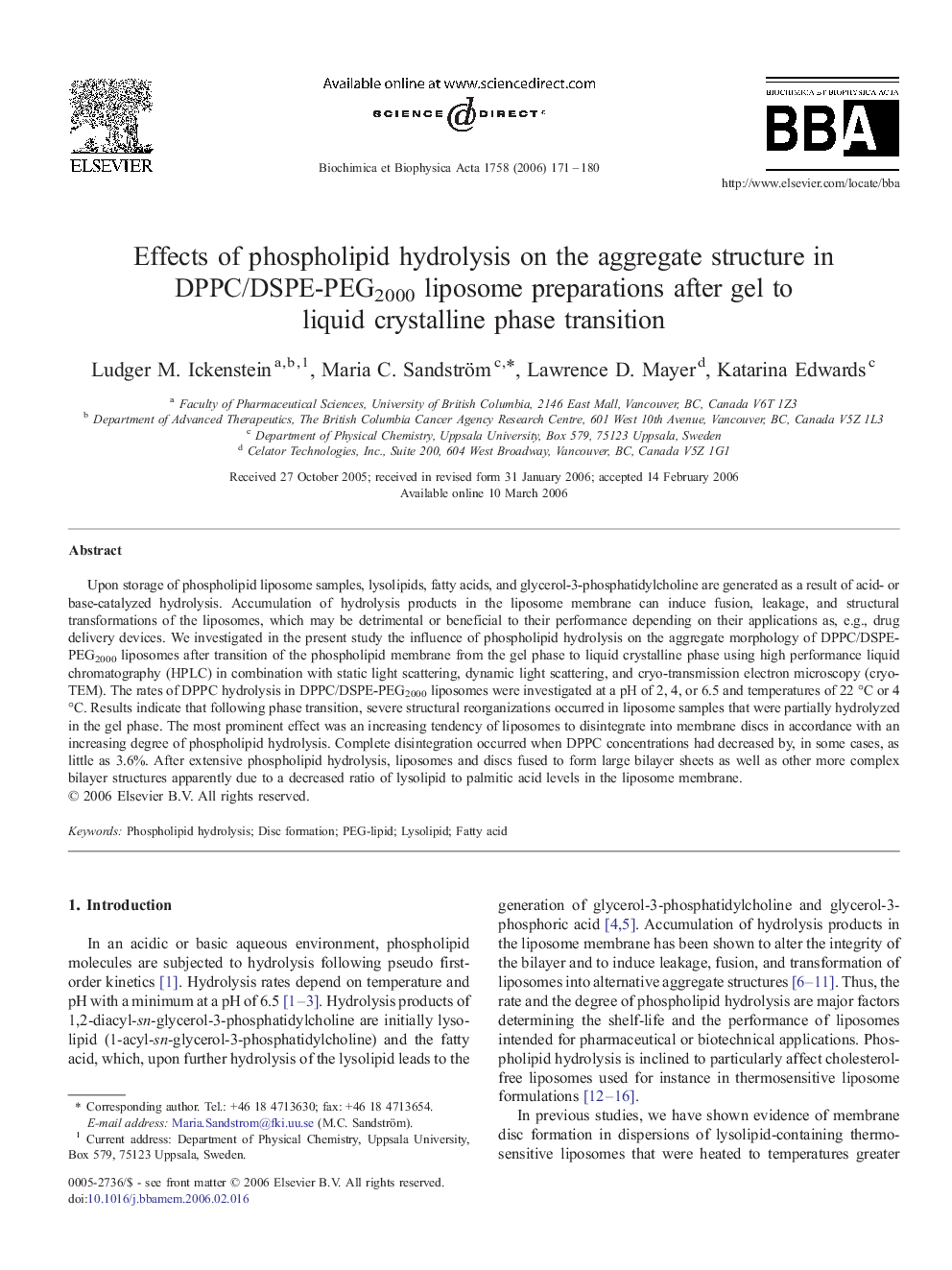| Article ID | Journal | Published Year | Pages | File Type |
|---|---|---|---|---|
| 1946179 | Biochimica et Biophysica Acta (BBA) - Biomembranes | 2006 | 10 Pages |
Upon storage of phospholipid liposome samples, lysolipids, fatty acids, and glycerol-3-phosphatidylcholine are generated as a result of acid- or base-catalyzed hydrolysis. Accumulation of hydrolysis products in the liposome membrane can induce fusion, leakage, and structural transformations of the liposomes, which may be detrimental or beneficial to their performance depending on their applications as, e.g., drug delivery devices. We investigated in the present study the influence of phospholipid hydrolysis on the aggregate morphology of DPPC/DSPE-PEG2000 liposomes after transition of the phospholipid membrane from the gel phase to liquid crystalline phase using high performance liquid chromatography (HPLC) in combination with static light scattering, dynamic light scattering, and cryo-transmission electron microscopy (cryo-TEM). The rates of DPPC hydrolysis in DPPC/DSPE-PEG2000 liposomes were investigated at a pH of 2, 4, or 6.5 and temperatures of 22 °C or 4 °C. Results indicate that following phase transition, severe structural reorganizations occurred in liposome samples that were partially hydrolyzed in the gel phase. The most prominent effect was an increasing tendency of liposomes to disintegrate into membrane discs in accordance with an increasing degree of phospholipid hydrolysis. Complete disintegration occurred when DPPC concentrations had decreased by, in some cases, as little as 3.6%. After extensive phospholipid hydrolysis, liposomes and discs fused to form large bilayer sheets as well as other more complex bilayer structures apparently due to a decreased ratio of lysolipid to palmitic acid levels in the liposome membrane.
